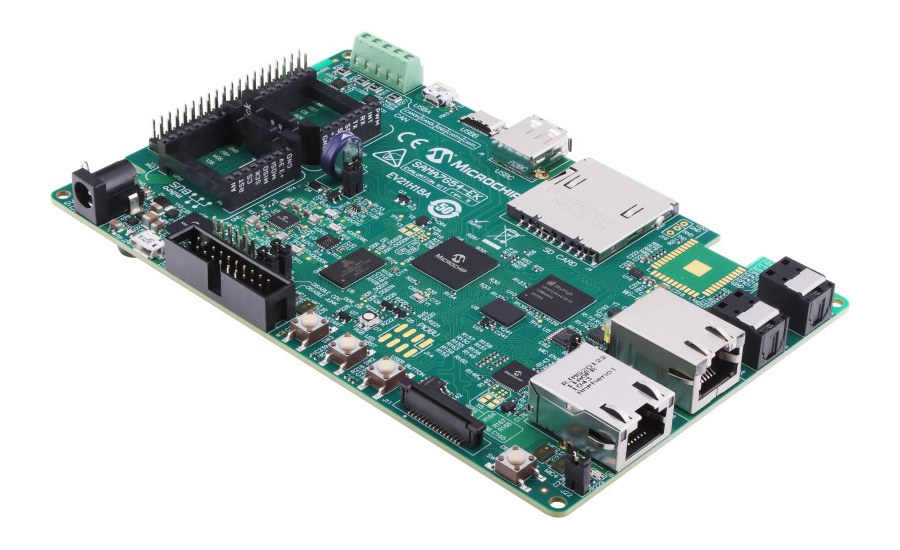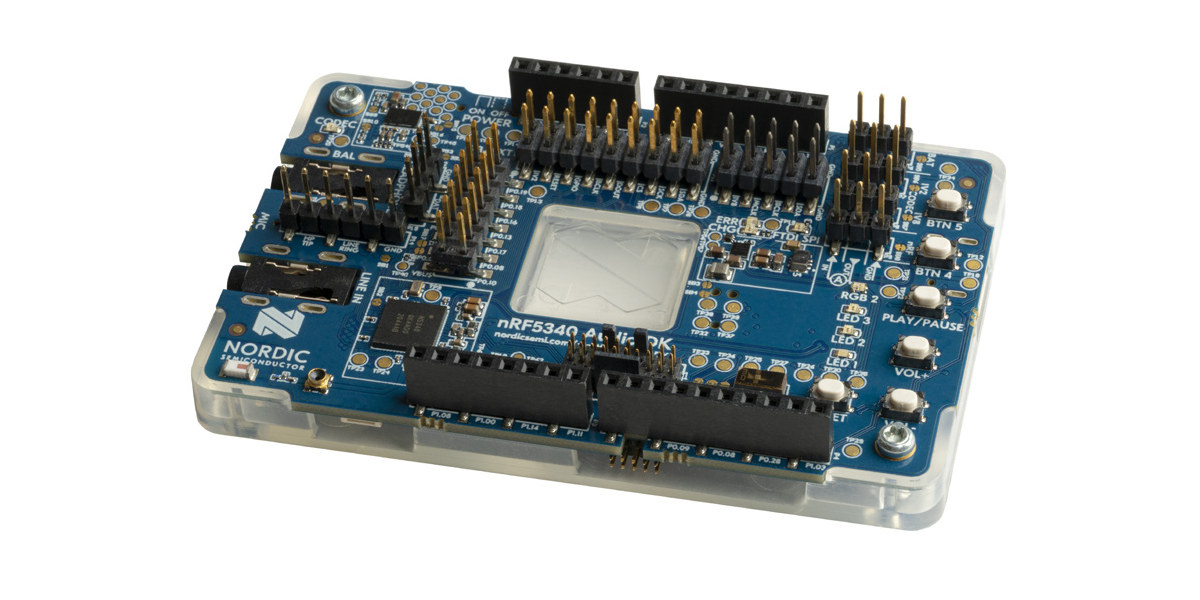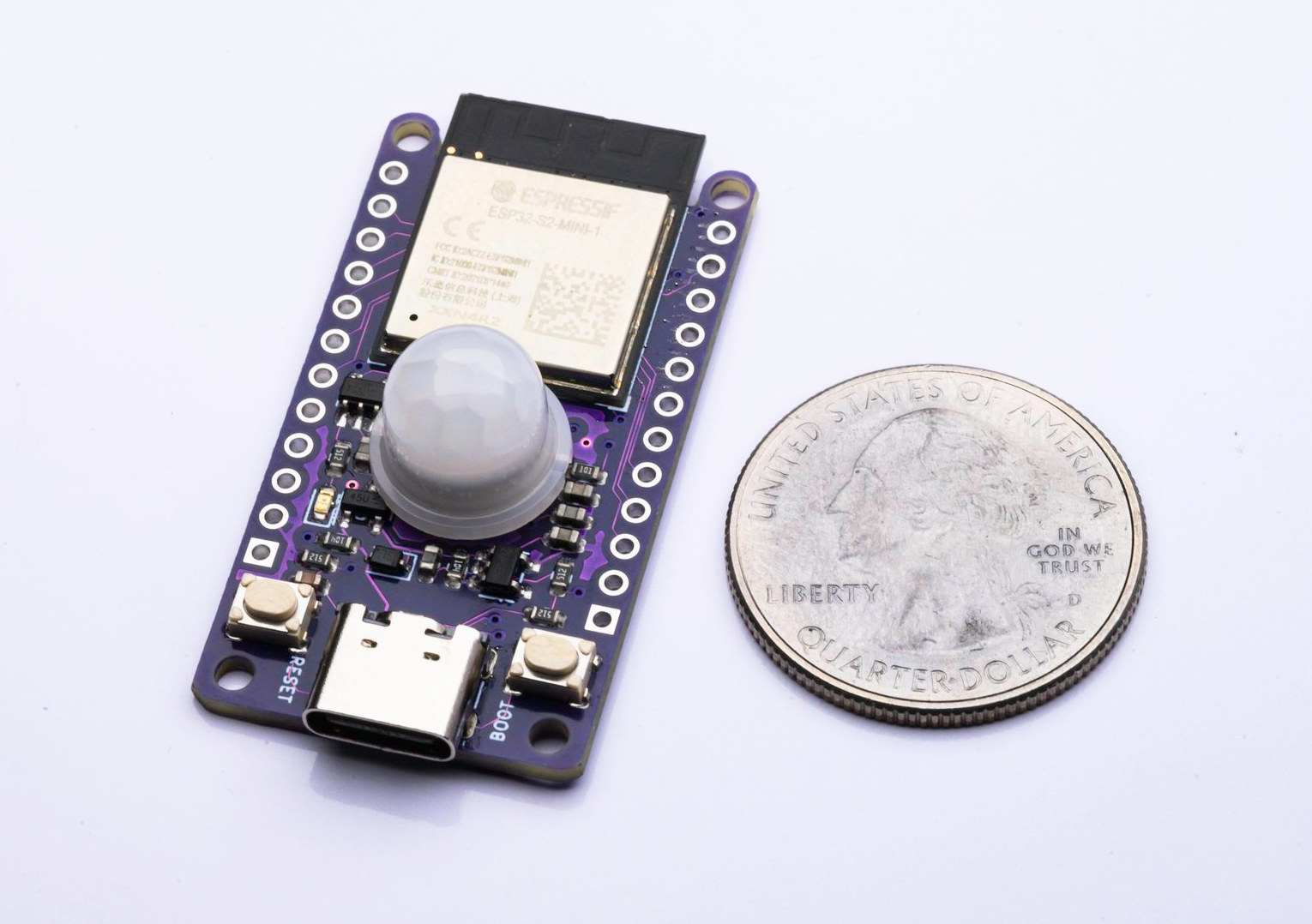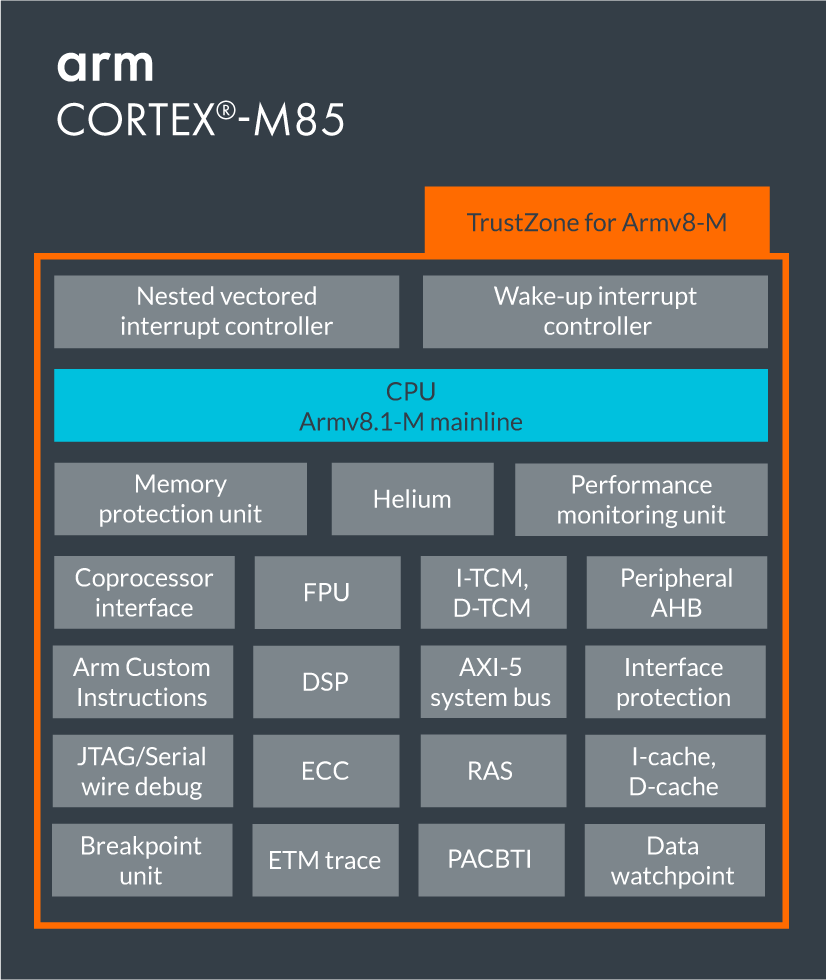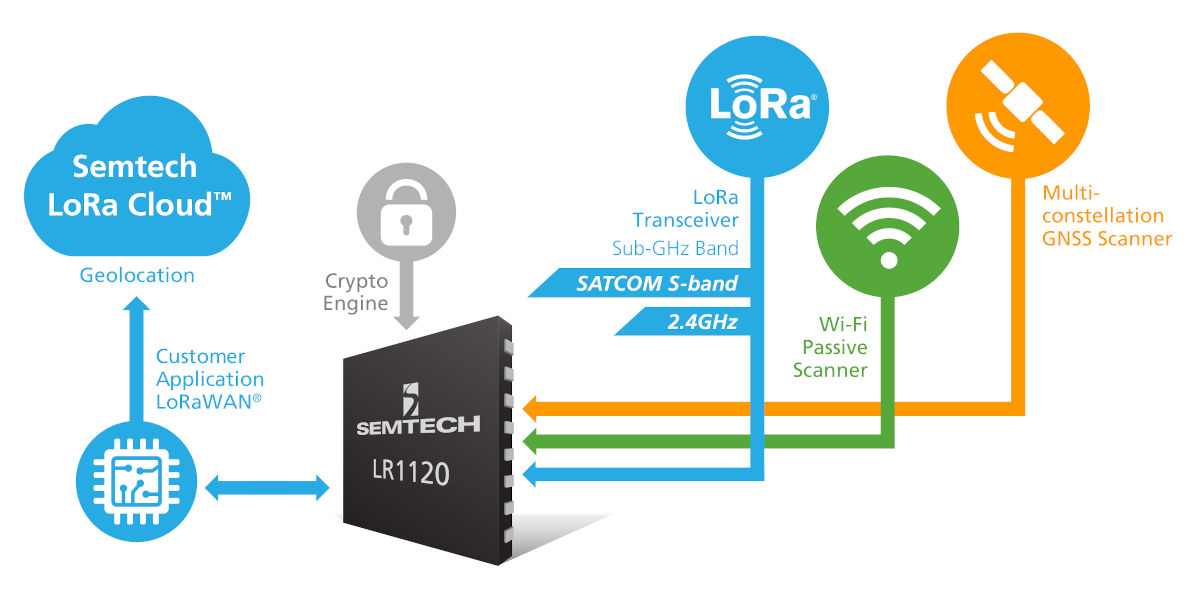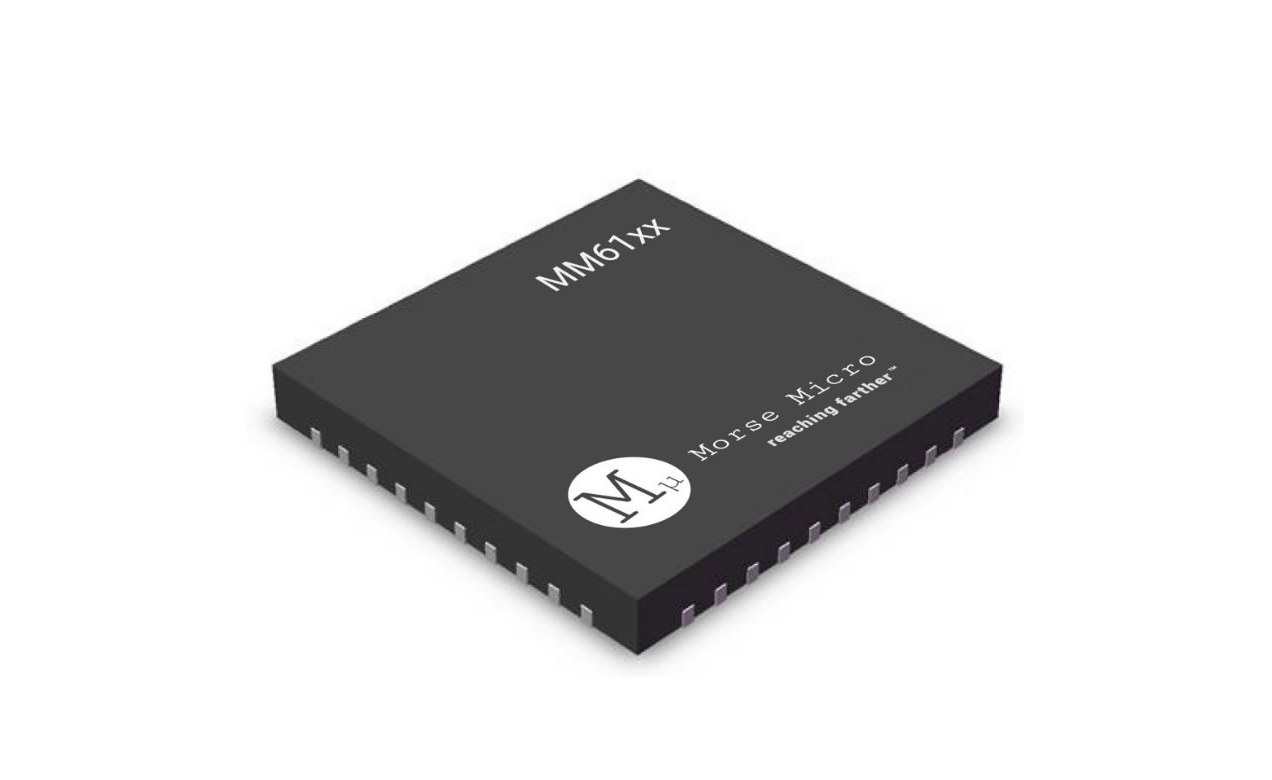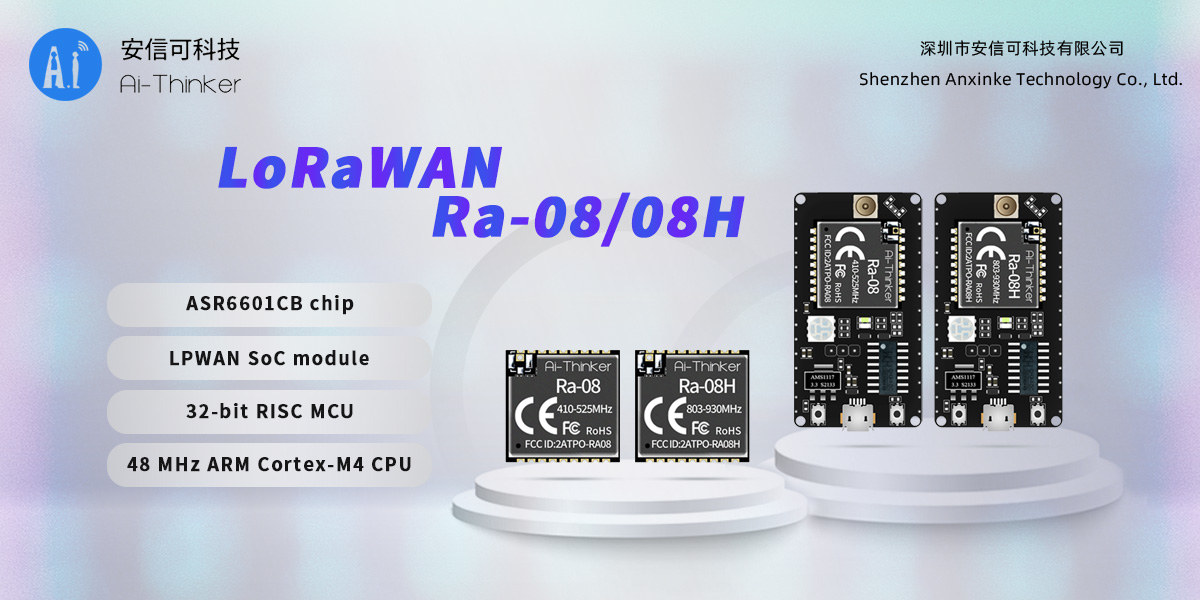Microchip has just announced the 1 GHz SAMA7G54 single-core Arm Cortex-A7 microprocessor (MPU) with MIPI CSI-2 and parallel camera interfaces, as well as up to four I2S, one SPDIF transmitter and receiver, and a 4-stereo channel audio sample rate converter. The company specifically launched a single-core processor to offer a lower power solution for AI camera and audio solutions, and the chip is coupled with the MCP16502 power management IC that has been optimized to provide the best power/performance ratio for the SAMA7G54. Microchip SAMA7G54 specifications: CPU – Arm Cortex-A7 based MPU @ up to 1GHz with 256KB L2 cache Memory – DDR2/DDR3/DDR3L/LPDDR2/LPDDR3 up to 533MHz Storage – Quad SPI, Octal SPI, 3x SD/eMMC Camera I/F – MIPI CSI-2 (2-lane up to 1.5 Gbps each) and 12-bit parallel camera Up to 8 Mpixel @ 30 fps Audio – Up to 4x I2S, PDM, SPDIF (Rx/Tx), 4 stereo channel ASRC Networking […]
Embedded World 2022 – June 21-23 – Virtual Schedule
Embedded World 2020 was a lonely affair with many companies canceling attendance due to COVID-19, and Embedded World 2021 took place online only. But Embedded World is back to Nuremberg, Germany in 2022 albeit with the event moved from the traditional month of February to June 21-23. Embedded systems companies and those that service them will showcase their latest solution at their respective booths, and there will be a conference with talks and classes during the three-day event. The programme is up, so I made my own little Embedded World 2022 virtual schedule as there may be a few things to learn, even though I won’t be attending. Tuesday, June 21, 2022 10:00 – 13:00 – Rust, a Safe Language for Low-level Programming Rust is a relatively new language in the area of systems and low-level programming. Its main goals are performance, correctness, safety, and productivity. While still ~70% of […]
Nordic Semi launches the nRF5340 Audio DK for Bluetooth LE Audio development
Nordic Semiconductor nRF5340 Audio DK is a Bluetooth LE audio development kit that enables better audio quality with LC3 codec, longer playtime, and new features such as Multi-Stream Audio and and Broadcast Audio. Equipped with the nRF5340 dual-core Cortex-M33 SoC, nPM1100 PMIC, and Cirrus Logic’s CS47L63 Audio DSP, the kit can be configured as a True Wireless Stereo (TWS) earbud, an LE Audio USB dongle, an enterprise headset, or a broadcast receiver. nRF5340 Audio DK specifications: WiSoC – Nordic Semi nRF5340 dual-core Arm Cortex-M33 multi-protocol microcontroller with support for Bluetooth 5.3 LE, Bluetooth mesh, NFC, Thread, Zigbee, 802.15.4, ANT, and 2.4 GHz proprietary; 1 MB flash and 512 KB of RAM for the 128 MHz application core, and 256 KB Flash and 64 KB RAM for the 64 MHz network core. Storage – MicroSD card holder Audio Cirrus Logic Audio DSP CS47L63 3.5mm mono headphone jack, 3.5mm stereo analog Line IN […]
Bee Motion ESP32-S2 PIR motion sensor offers GPIOs, over a year of battery life
Smart Bee Designs’ Bee Motion is an ESP32-S2 board with a PIR motion sensor, some GPIOs for expansion, and promising over a year of battery life under the right circumstances. If the name “Bee Motion” rings a bell, it’s because we covered the Bee Motion Mini board last month with an ESP32-C3 processor and a PIR sensor, but no USB port for programming and no expansion ability. It was just designed to be used as a battery-powered wireless PIR motion sensor. The Bee Motion expands the use cases of the solution, although it only features WiFi connectivity, and loses Bluetooth LE. Bee Motion specifications: Wireless module – Espressif ESP32-S2-MINI-1 module with Espressif ESP32-S2FH4 single-core 32-bit LX7 microcontroller @ up to 240 MHz, RISC-V ultra-low-power co-processor, 320 kB SRAM, 128kB ROM, 2.4 GHz WiFi 4 connectivity, 4MB flash, PCB antenna PIR sensor – Passive infrared motion sensor with dome lens, 5-meter […]
Arm Cortex-M85 is faster than Cortex-M7, offers higher ML performance than Cortex-M55
Arm has introduced a new MCU-class core with the Cortex-M85 core that offers higher integer performance than Cortex-M7, and higher machine learning performance compared to Cortex-M55 equipped with Helium instructions. The new Cortex-M85 core is designed for developers requiring increased performance for their Cortex-M powered products without going to Cortex-A cores, and instead, keeping important features such as determinism, short interrupt latencies, and advanced low-power management modes found in all Cortex-M cores. Arm Cortex-M85 key features and specifications: Architecture – Armv8.1-M Performance efficiency – 6.28 CoreMark/MHz and 3.13/4.52/8.76DMIPS/MHz (1. “ground rules” in the Dhrystone documentation, 2. inlining of functions, 3. simultaneous (”multi-file”) compilation). Bus interfaces AMBA 5 AXI 64-bit Main system bus (compatible with AXI4 IPs) AMBA 5 AHB 32-bit Peripheral bus AMBA 5 AHB 64-bit TCM Access bus (subordinate port) Pipeline – 7-stage (for main integer pipeline) Security Arm TrustZone technology PACBTI extension (Pointer Authentication, Branch Target Identification) helps […]
Semtech LR1120 enables global asset tracking with multi-band LoRa, WiFi, and GNSS
Semtech LoRa Edge LR1120 is an ultra-low-power multi-band chip designed for global geolocation and asset tracking applications including direct satellite-connected Internet of Things (IoT) applications in supply chain management and logistics. Not only does the LR1120 features the usual sub-GHz LoRa radio found in most other chips from the company, but also comes with 2.4GHz LoRa and SATCOM S-Band support for satellite, as well as a GNNS radio compatible with GPS and Beidou, and a WiFi radio for indoor positioning (but no WiFi RTT/802.11mc support). Semtech LR1120 key features and specifications: Low-power high-sensitivity LoRa/(G)FSK half-duplex RF transceiver Worldwide ISM frequency bands support in the range 150 – 960MHz (Sub-GHz) and 2.4GHz, as well as 1.9-2.1GHz (S-Band) Low Noise Figure RX front-end High power PA path +22dBm in the Sub-GHz band Up to +11.5dBm in the 2.4GHz band LR-FHSS modulator Integrated PA regulator supply selector to simplify dual power +15/+22dBm with […]
Morse Micro MM6104, MM6108 Wi-Fi HaLow SoCs support up to 32.5 Mbps data rate
Australian company Morse Micro MM6104 and MM6108 Wi-Fi HaLow SoCs should offer some competition to the Newracom NRC chips found in all 802.11ah WiFi HaLow boards and devices released so far. Both MM610x chips have similar features, but the MM6104 SoC supports 1/2/4 MHz channel bandwidth for up to 15 Mbps data rate – just like the Newracom NRC7292 chip – while the more powerful MM6108 can handle a data rate of up to 32.5 Mbps thanks to 1/2/4/8 MHz channel bandwidth. MM6104/MM6108 specifications: Optional 32-bit RISC-V Host Applications Processor (HAP) Single-Chip IEEE802.11ah Wi-Fi HaLow transceiver for low-power, long-reach IoT applications Worldwide Sub-1 GHz frequency bands (850MHz to 950MHz) On-chip power amplifier with support for external PA option MM6104 – 1/2/4 MHz channel bandwidth for up to 15 Mbps data rate (Note: the datasheet reads “single-stream max data rate up to 40 Mbps”, but it appears to be a mistake […]
Ai-Thinker Ra-08 LoRaWAN module features ASR6601 chip (Sponsored)
Ai-Thinker Ra-08/08H are new LoRaWAN modules based on ASR Microelectronics ASR6601 module featuring a 48MHz ARM Cortex M4 microcontroller and Semtech SX1262 transceiver allowing long-range, low power communication for the Internet of Things. Both LoRaWAN modules share most of the same specifications, but the Ra-08 module operates in the 410-525MHz frequency band, while the Ra-08H module works in the widely used 803MHz to 930MHz band. Ai-Thinker also provides a development kit for each module. Ai-Thinker Ra-08/Rs-08H key features and specifications: Programmable embedded Arm Cortex-M4 MCU with 128 KB of Flash and 16 KB of SRAM LoRa radio Sensitivity – -138 dBm @ SF12/125KHz Tx power – Up to +22dBm Frequencies Ra-08 – 410 MHz to 525 MHz Ra-07H – 803 MHz to 930 MHz Spread spectrum factor – SF5, SF6, SF7, SF8, SF9, SF10, SF11, SF12 LoRa, (G)FSK, BPSK, and (G)MSK modulation Bit rate up to 62.5 Kbps in LoRa […]


